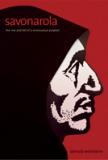Fall From Grace
Girolamo Savonarola’s life spanned the latter half of the 15th century, at a time when Italy was simultaneously emerging from the late Middle Ages and launching the transforming cultural, intellectual and spiritual movement that came to be known as the Renaissance. This was a world filled with paradox as great sensitivity and creativity intermixed with widespread violence and power struggles. In the political realm, various republican city-states vied with oligarchic and monarchic polities and increasingly gave way to them. In the midst of this whirlwind of conflict and change, one of the greatest paradoxes of all was the friar from Ferrara, who had such a dramatic and in many ways surprising impact on the Queen City of the Renaissance itself: Florence.
Donald Weinstein, a leading authority on the Italian Renaissance, has written an insightful and scholarly study of Florence’s improbable prophet within the context of Quattrocento Italy. With regard to historical and especially religious developments, it is important to remember that Savonarola died some two decades before Martin Luther, many of whose ideas galvanized what proved to be a religious revolution. But in examining Savonarola’s life and impact, it is intriguing to see that so many of the issues often assumed to have originated with the Protestant Reformation had, in fact, been part of the religious culture and conversation for quite some time.
Savonarola’s voice was perhaps louder and more insistent than most of his contemporaries, though by no means unique, in calling for a faith-centered piety that was Scripture-centered as well as Christocentric. So, too, an increasing chorus of voices was calling for reform and renewal—in the church, to be sure, but in civic society as well. Moreover, as crucial as preaching became in both Protestant and Catholic circles in the 16th century, Savonarola was just one of a number of late medieval figures who employed the art and power of preaching—often to remarkable effect.
Although Savonarola was in various ways a man of his time, he also stood apart. His preaching, which combined the ascetic with the increasingly triumphalistic, shifted at times from the spiritual to the political, fracturing support among his listeners, not to mention within Florentine society as a whole.
Of particular interest, Savonarola, despite considerable support among segments of the laity, faced growing clerical opposition—a harbinger of trouble. This was especially true among an array of religious orders as well as among those at the papal court, not least of all that of the shrewd but corrupt Pope Alexander VI. Even among contemporaries with purported prophetic gifts, Suor Maddalena, a nun from Santa Maria di Casignano, castigated Savonarola as a fraud and challenged him to a prophetic duel of sorts. He dismissed her as a naïve woman who was being manipulated by his enemies.
Savonarola is perhaps most famous—and infamous—for his Bonfires of the Vanities, in which throngs of repentant and zealous Florentines gathered up all manner of supposed pagan, sinful or vane items and cast them into the consuming flames. Whatever benefit these conflagrations may have been to the consciences of contemporaries, untold precious works of art were forever lost in this shortsighted attempt to stem the purportedly paganizing tide of the Renaissance as well as the perennial effects of the Fall.
In addition, the author places Savonarola’s preaching within the context of the struggle for control in Italy among the various Italian states and the ambitions of the kings of France and Spain. In particular, the friar viewed the invasion of Italy by Charles VIII of France in 1494 as a vindication of his warning about the wrath to come if the people of Florence and Italy did not repent of their sins and reform their lives. Over several years, however, the political and religious situations shifted as Florence and most especially its prophet were increasingly isolated and called to task. Savonarola’s excommunication by the pope in 1497 and the abortive trial by fire with the Franciscans led to his final undoing: arrest, torture, confession and execution.
Weinstein’s nuanced discussion of Savonarola’s confession is a highlight of the book, arguing that physical torture probably intensified the pressures of a partially guilty conscience. While he conceded he had deceived people as to his prophetic inspiration, he insisted on the validity of much of his message. The author’s summing up of Savonarola’s divergent “afterlife” is also quite useful. Condemned by many as deserving of his dramatic fall from grace, he has been lauded by others, including some voices who have called for his canonization as well as those who have seen him as a hero of civic virtue and social justice. In sum, while Weinstein’s Savonarola is not always a page-turner, it is a balanced and often intriguing portrait of a gifted but troubled soul.
This article also appeared in print, under the headline “Fall From Grace,” in the July 2, 2012, issue.








